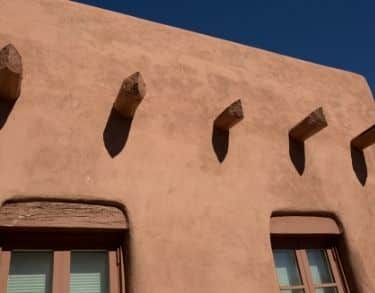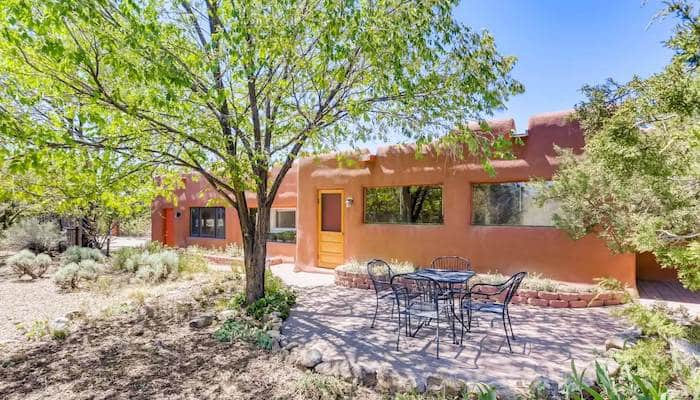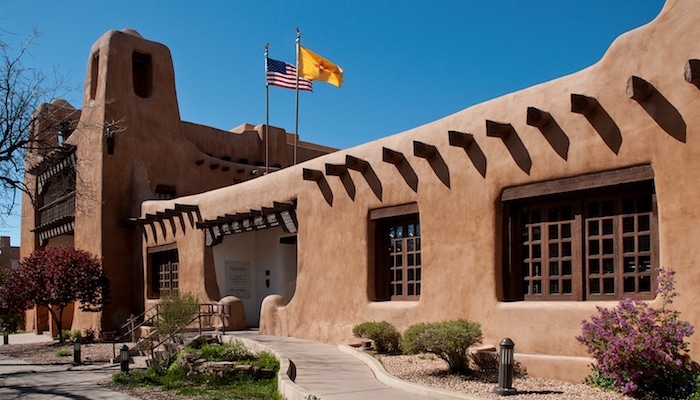A rose by any other name, sure, but let’s suppose you’re talking about music. What’s a phrase? What’s a bar? What’s a “legato”? What does “staccato” mean?
You don’t need an education in music theory to be able to say “Boy, that sure is pretty,” but it helps to know your terms to get the most from an in-depth conversation. The same goes for architecture.
If you’ve been in Santa Fe for a little while, then you probably wish you had a nickel for every time you looked at a home or building and said “Boy, that sure is pretty.” Those five words are rarely untrue in Santa Fe, but if you’re ready to take that conversation to the next level, here’s what you need to know.
Adobe: That Southwest Look
There are a lot of architectural influences to be found in Santa Fe, but what really sets homes in the area apart is the adobe style.
Traditional adobe homes are created from whatever people have handy—such as straw, clay, and mud. The materials are mixed and laid in wooden frames to create bricks, then stacked into walls, with an exterior layer of the material to hold it all together.
Although most basic adobe materials aren’t always built to last, there are more durable alternatives. It’s not unusual to see authentic adobe buildings still standing over a hundred years later. Modern adobe will typically incorporate concrete for additional strength.
Santa Fe Design Influences
Territorial Revival, Spanish Revival, and Pueblo Revival are the three core design styles in Santa Fe homes.
While they look similar at a glance, each style comes with distinct differences you can identify with a bit of experience. These styles intermingle and many buildings use all three, but here’s how you can tell them apart:
- Territorial Revival Dates back to the 19th century but founded on much older design traditions. Noted for its decorative trims echoing Gothic and Greek architectural styles. Typical elements: Flat roofs and hard, angular edges, often capped with brick around the roofline. Much more European than Mexican. Think Gothic cathedrals, but with a Southwestern exterior. Examples found in Santa Fe include the Bataan Memorial Building on the grounds of the New Mexico State Capitol complex.
- Spanish Revival A popular style in California and Florida. Buildings can be spotted by their plaster walls, clay tile roofs, and decorative iron trim.
- Pueblo Revival The style you’re usually thinking of when you think of adobe. Not all Pueblo-style homes are adobe, but either way they focus on soft, rounded corners and exposed wooden support beams reminiscent of adobe. The great thing about Pueblo Revival is that no matter how big and impressive a building may be, it still feels warm and homey, a cozy hideaway in the vast Southwestern desert. Examples found in Santa Fe include the New Mexico Museum of Art.
If you want a handy cheat sheet, think of it like this: Pueblo Revival is marked by soft corners. Spanish Revival by clay tiled roofs. And Territorial Revival by its angular edges lined with brick.



